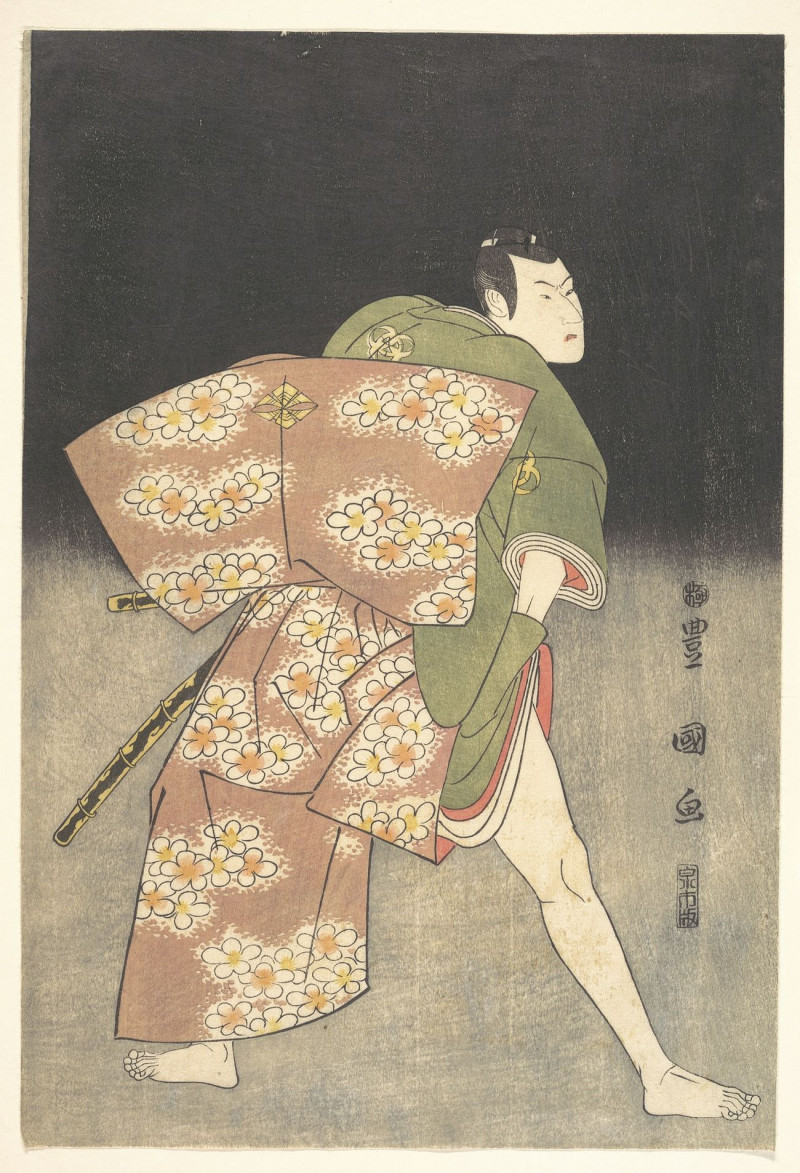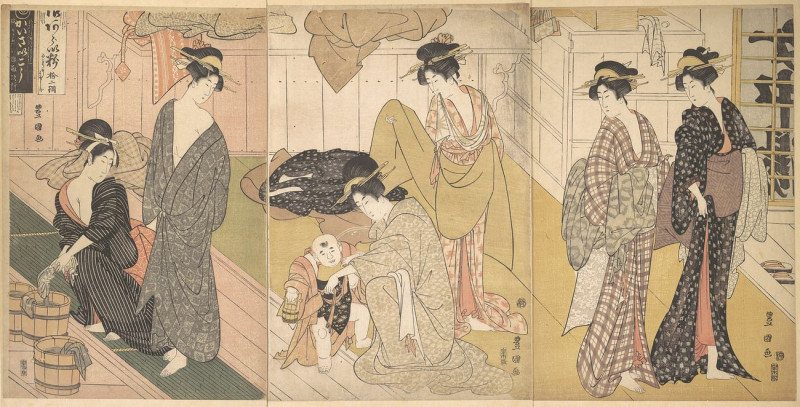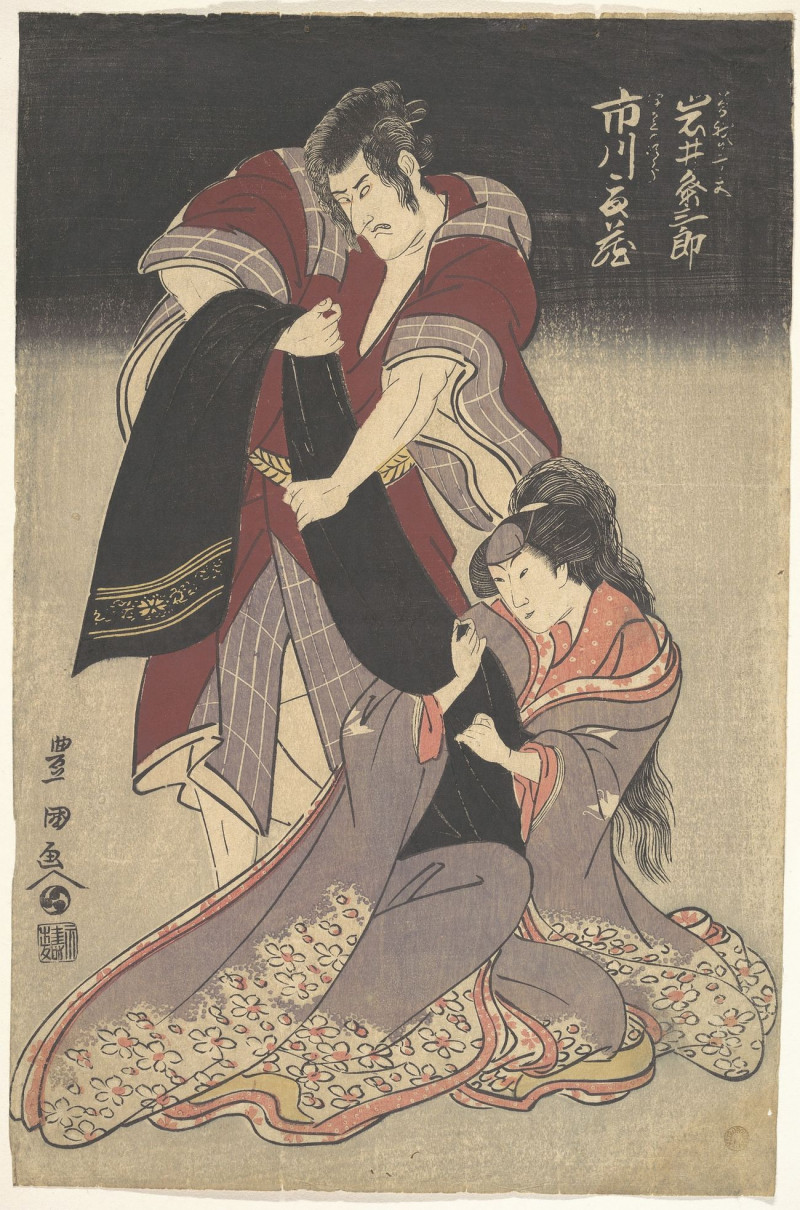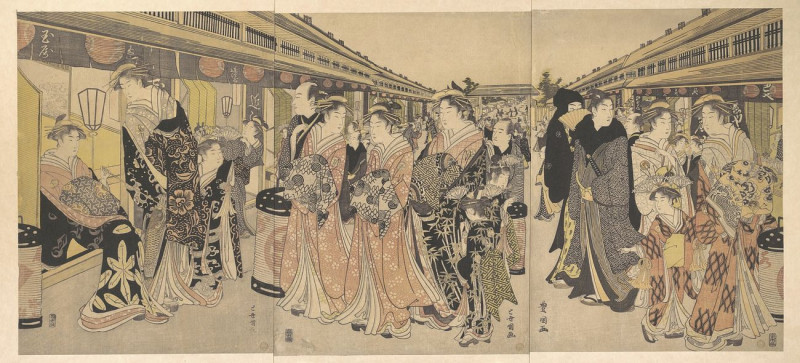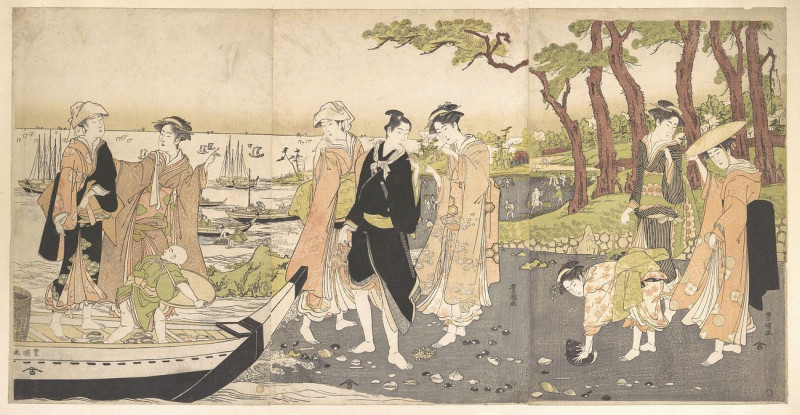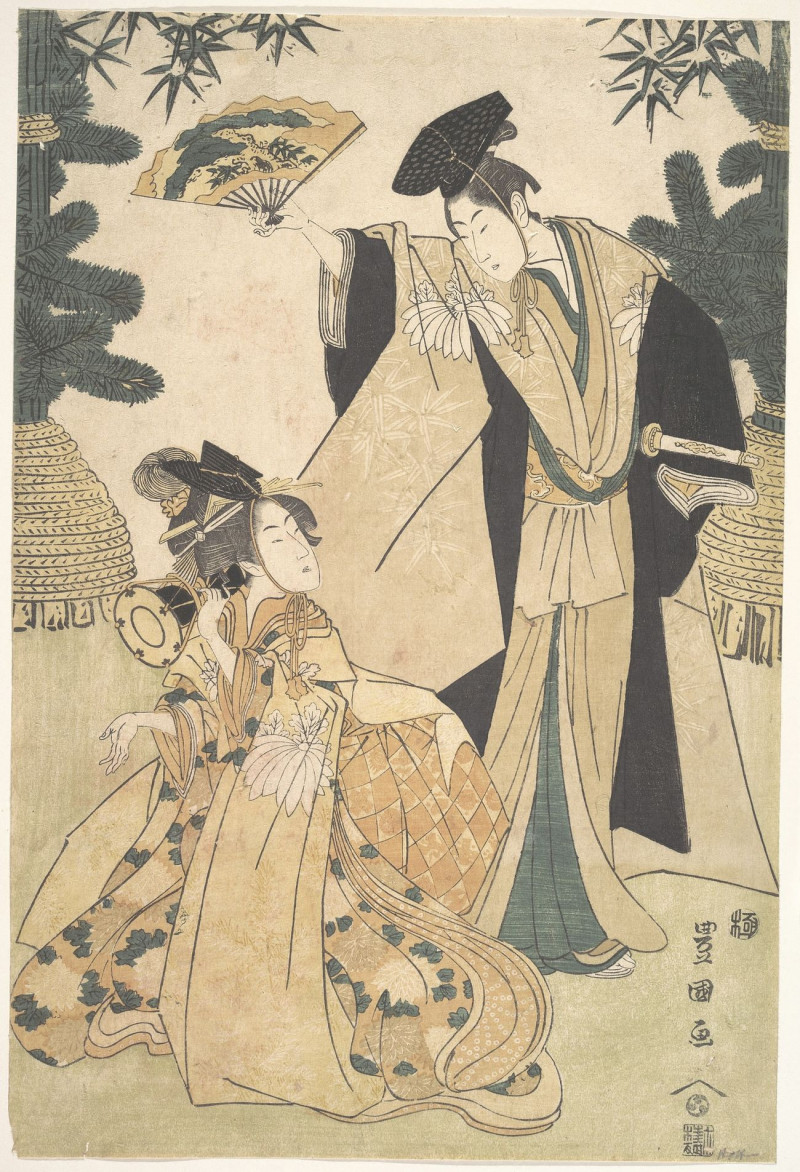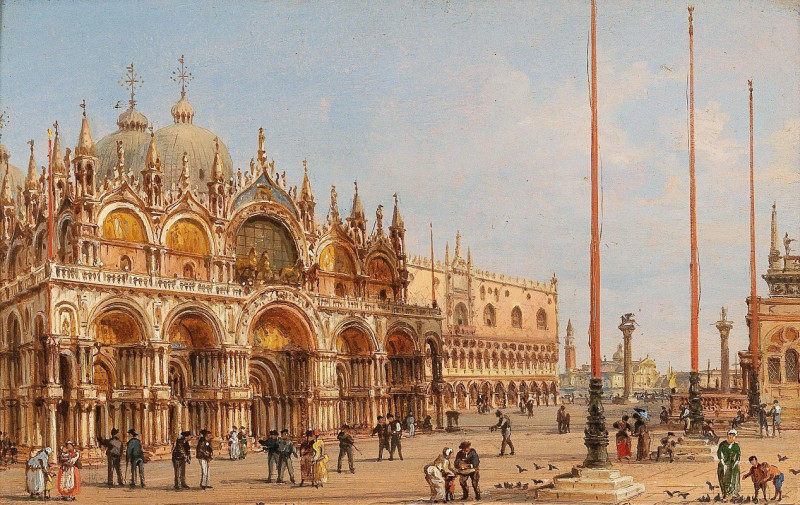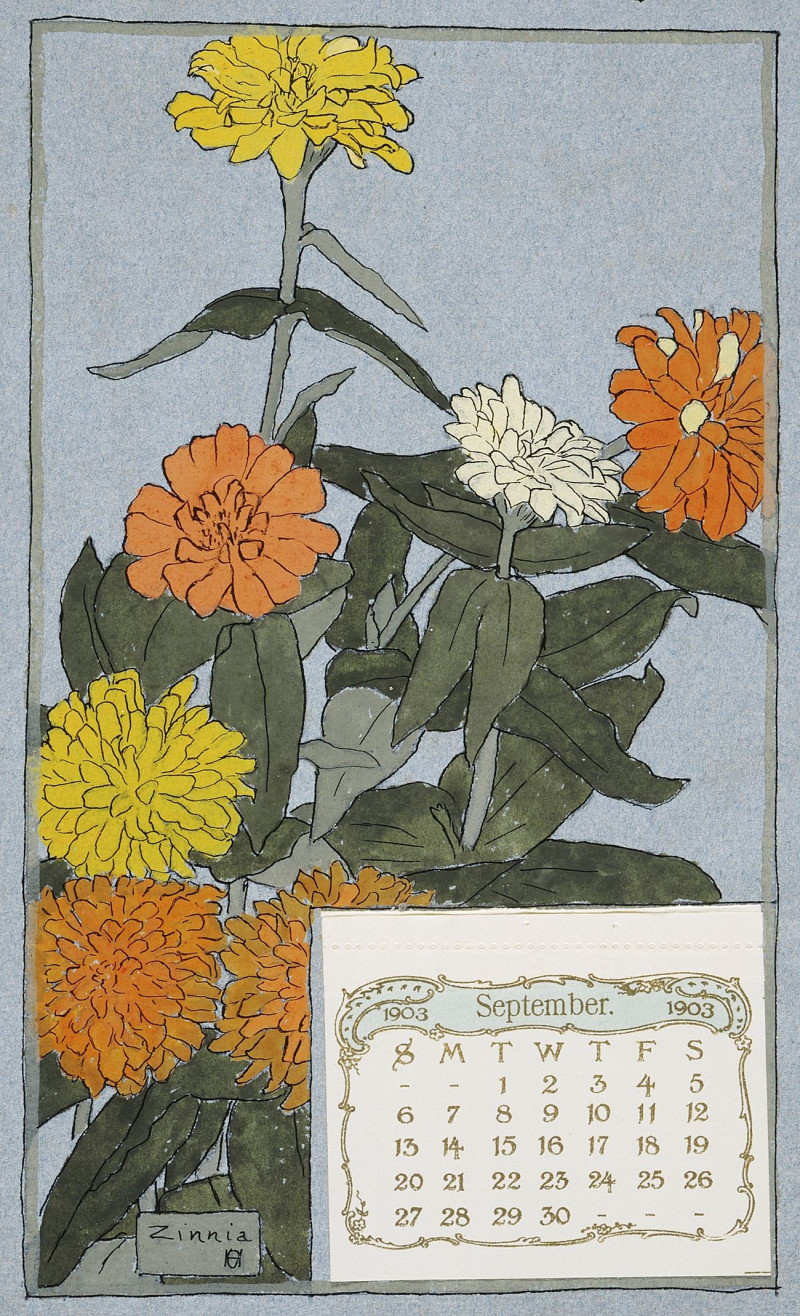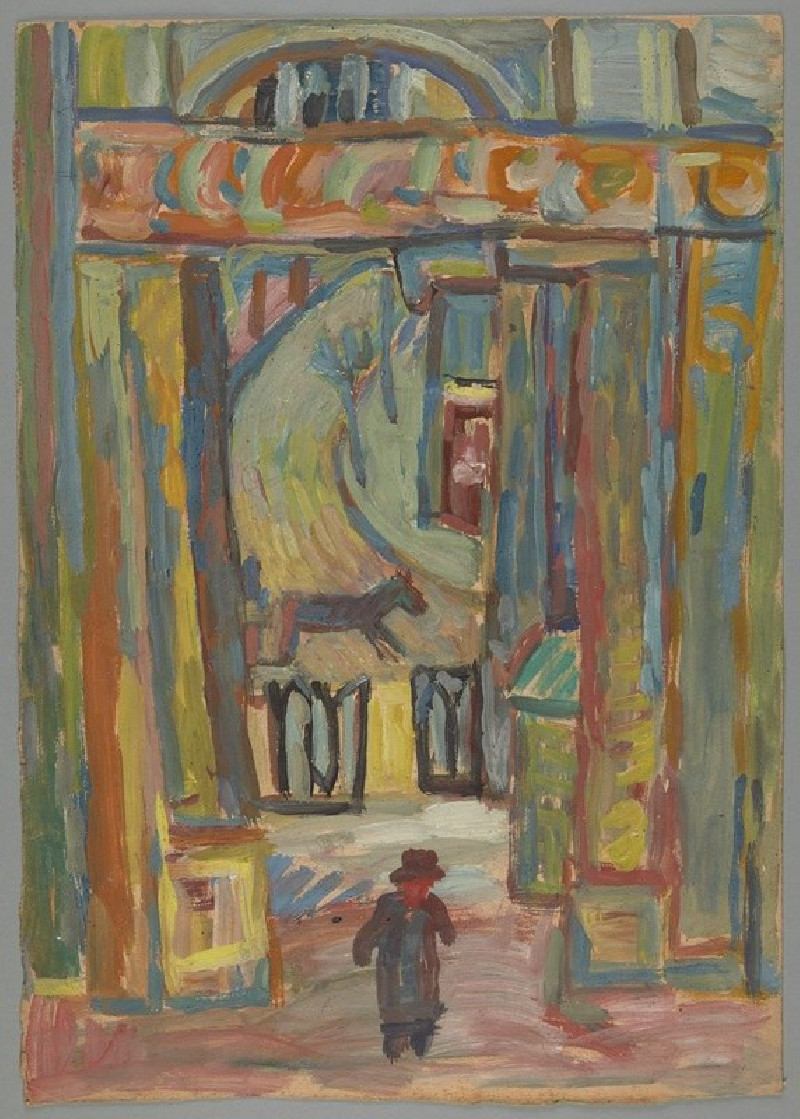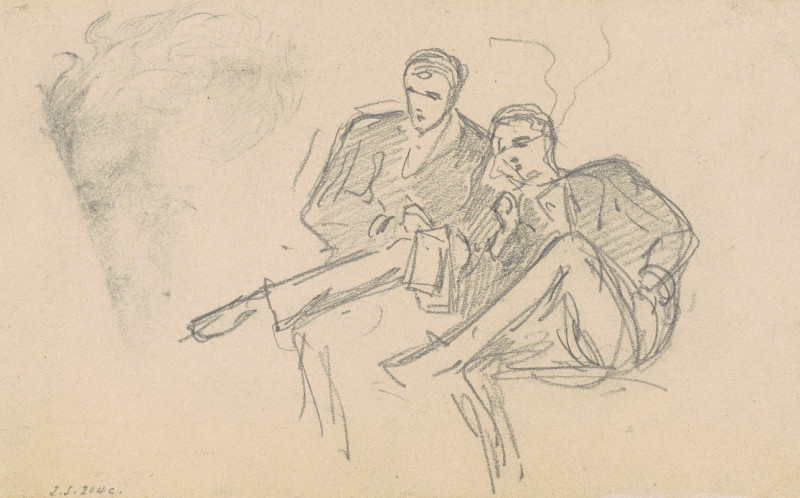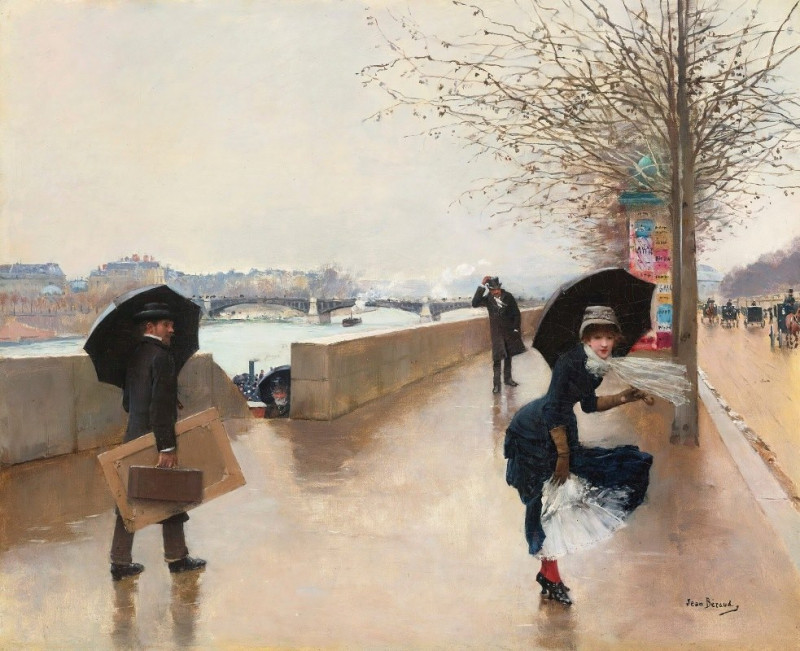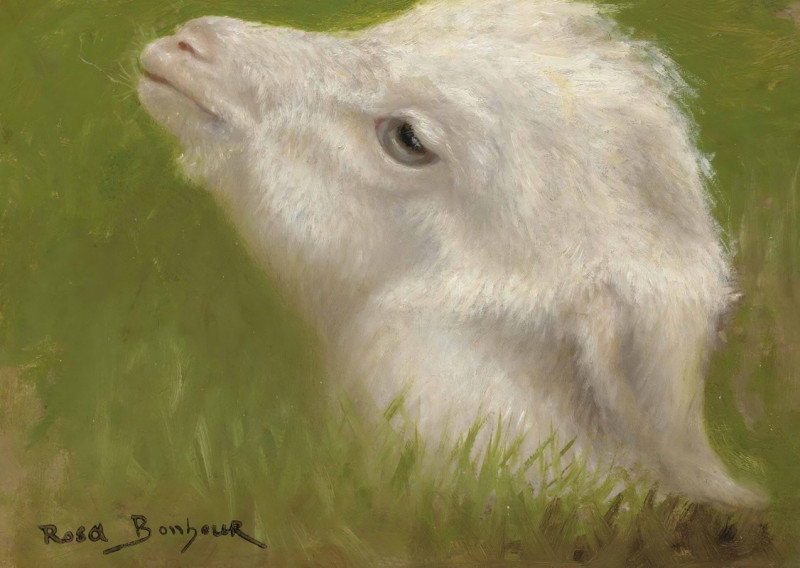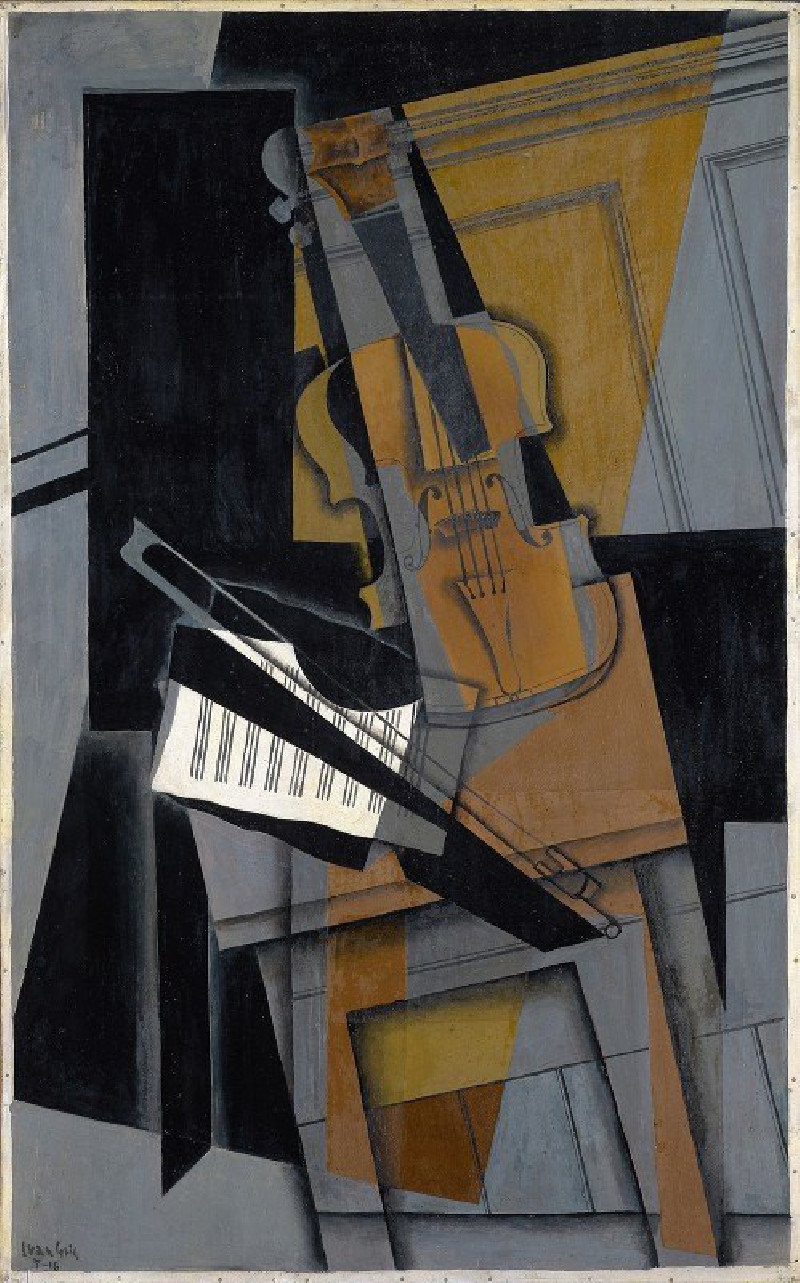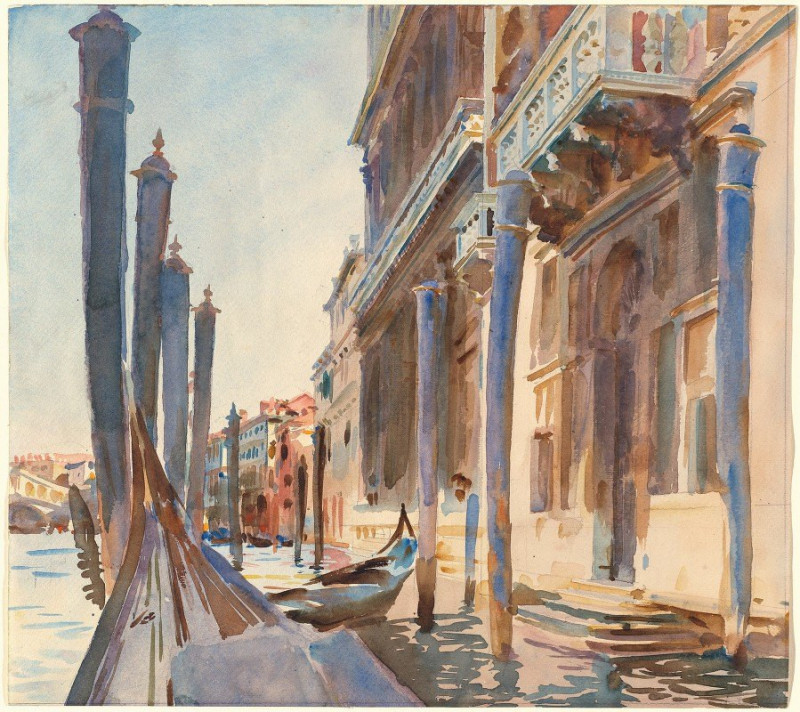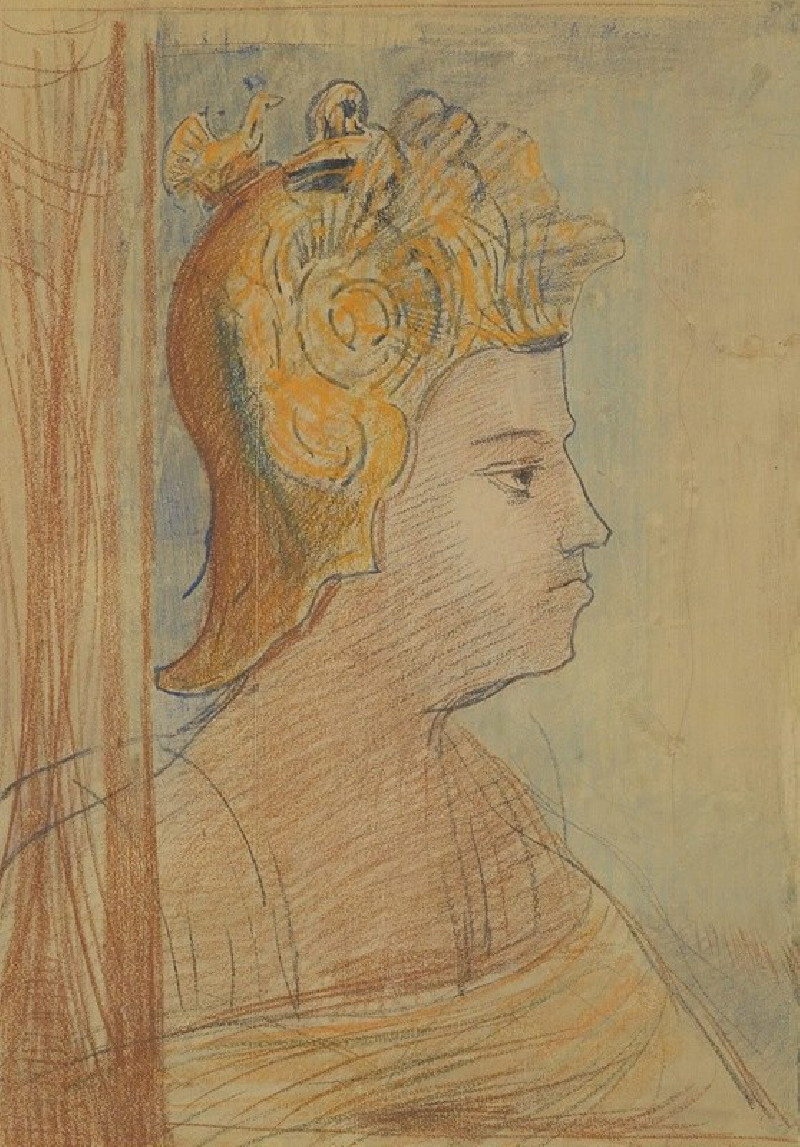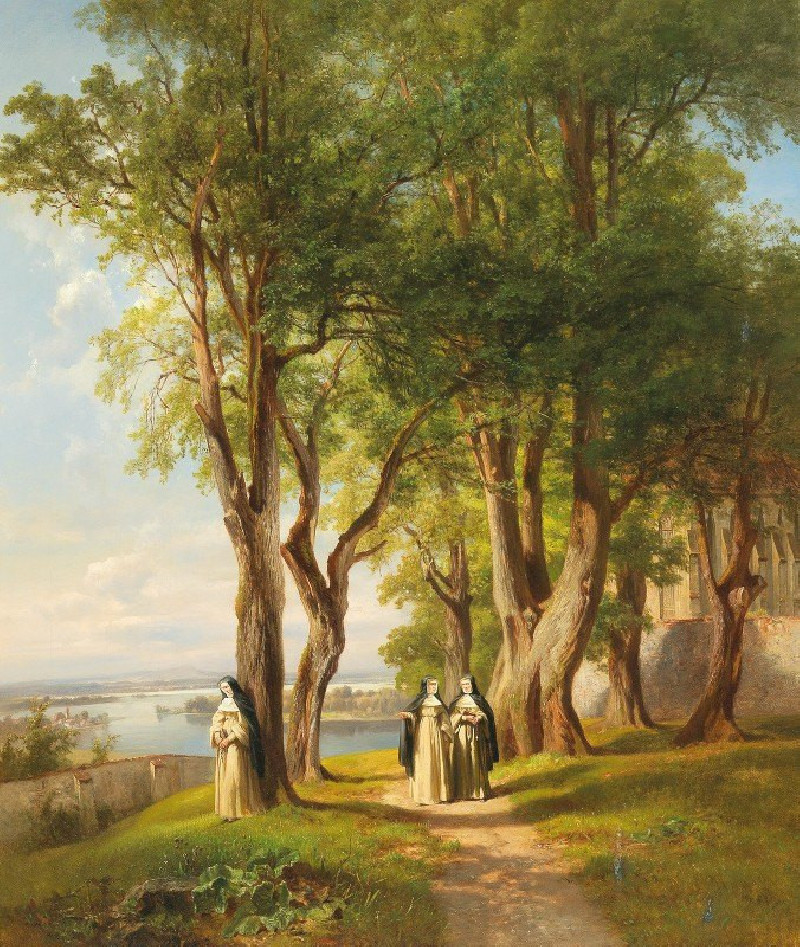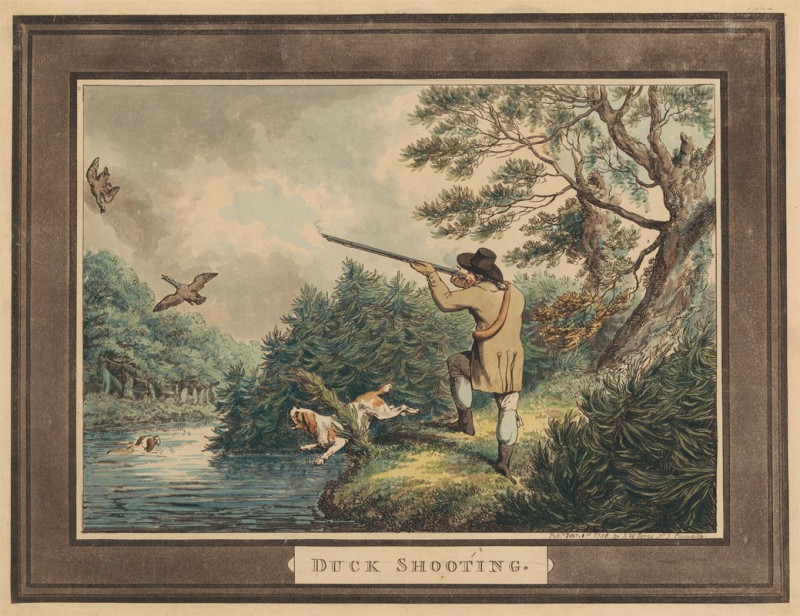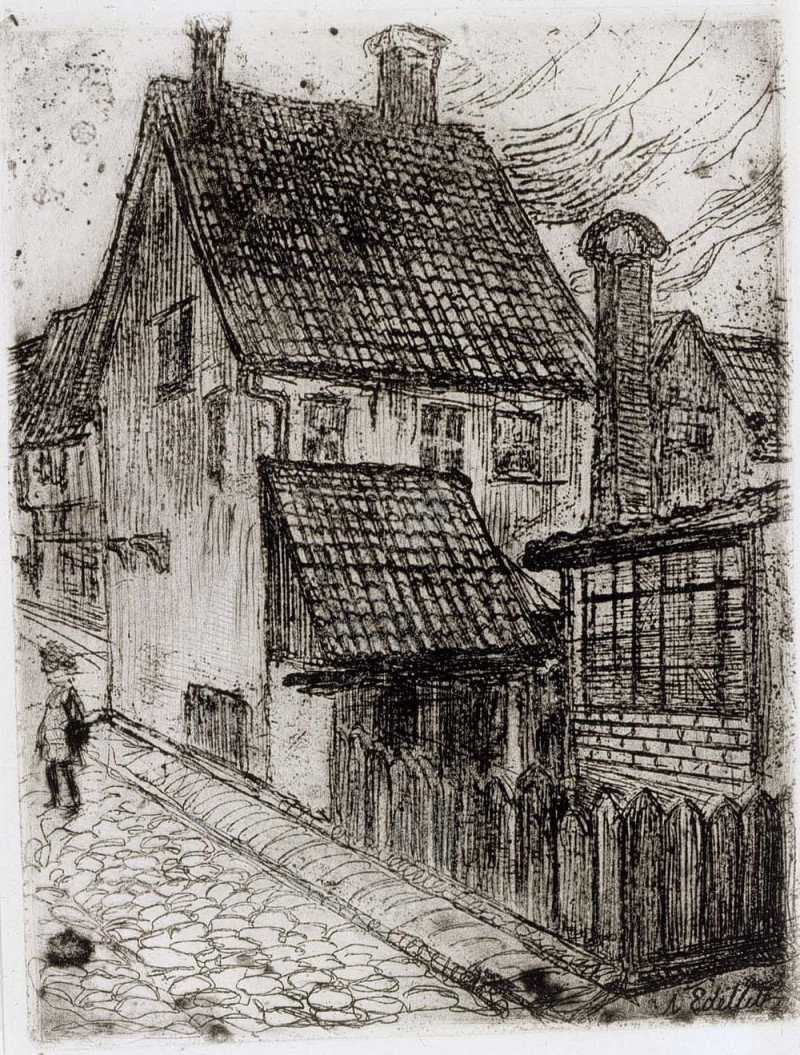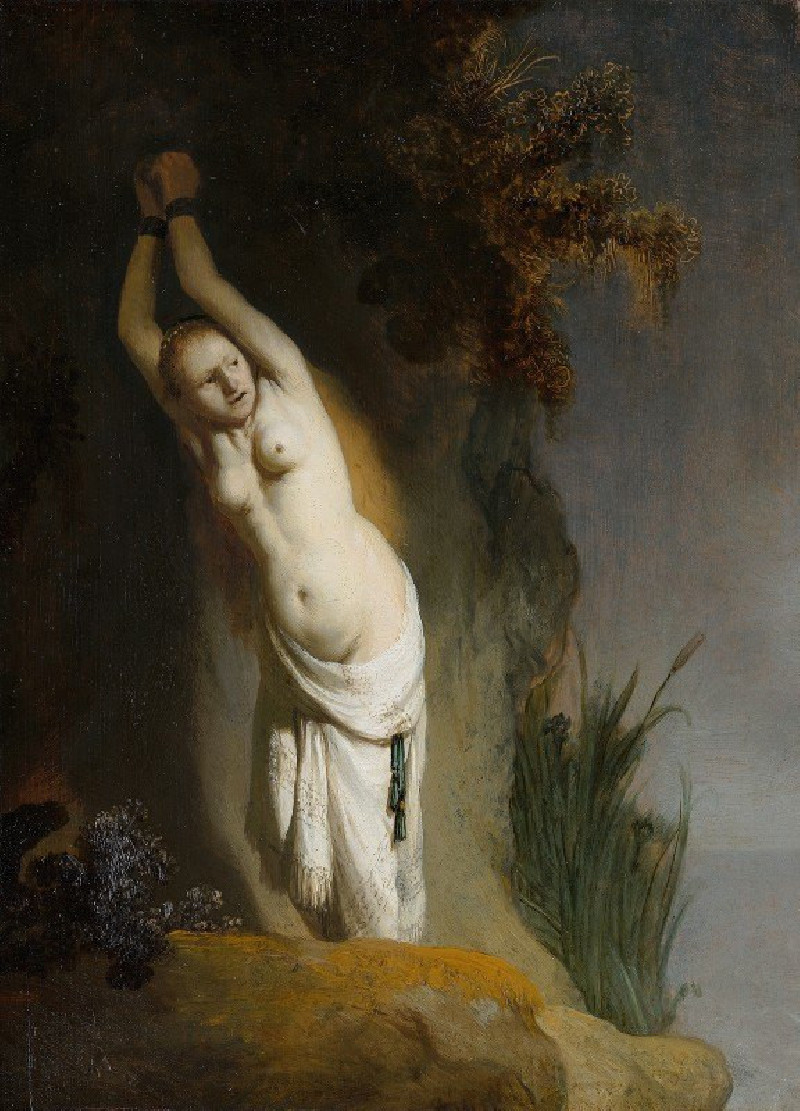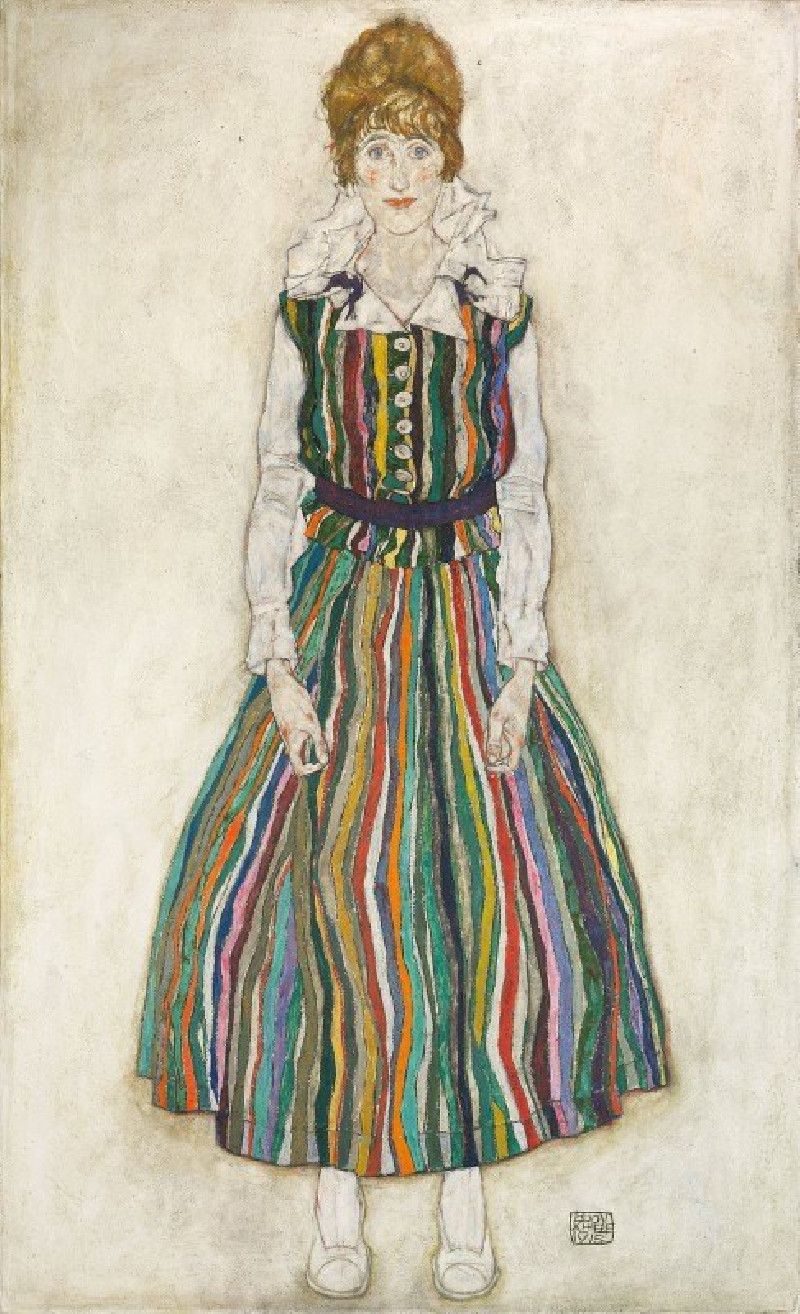Four Women Passing A Group Of Trees
Technique: Giclée quality print
Recommended by our customers
More about this artwork
The artwork titled "Four Women Passing A Group Of Trees" by Utagawa Toyokuni features a detailed depiction of four women walking together beside a cluster of bare, winter trees. Each woman is dressed in traditional Japanese kimono, elaborately patterned and colorful, which indicates their likely high social status or involvement in a cultural or ceremonial activity.Their attire includes various motifs and designs, suggesting the richness of the fabric and the attentiveness to detail in their dress. The women's hairstyles are equally intricate, adorned with accessories that complement their overall appearance. The expressions on their faces and their posture suggest movement and possibly a conversation or interaction among themselves as they walk.The background, while not heavily detailed, gives a clear indication of a colder season due to the leafless branches of the trees. The use of color is muted, possibly due to the age of the piece, and focuses largely on the figures themselves and the immediate foreground. The subtlety of the background allows the viewer to concentrate more on the subjects and their vivid garments.From the style and features, this painting is likely a woodblock print, a common technique in Japanese ukiyo-e art which flourished during the Edo period. Toyokuni's work often captures the beauty and complexity of human subjects, particularly from the kabuki theater and the everyday life of Edo (now Tokyo).
Delivery
Returns
Utagawa Toyokuni (1769-1825) was a prominent Japanese woodblock printmaker and painter of the Edo period. Born in Edo (now Tokyo), he was the chief disciple of Utagawa Toyoharu, a well-respected printmaker. He specialized in kabuki theater prints, which depicted famous actors in performances and featured dramatic scenes from plays. In addition to kabuki theater prints, Toyokuni also produced portraits of geishas, landscapes, and scenes from everyday life. He eventually became a leading master of the Utagawa School.

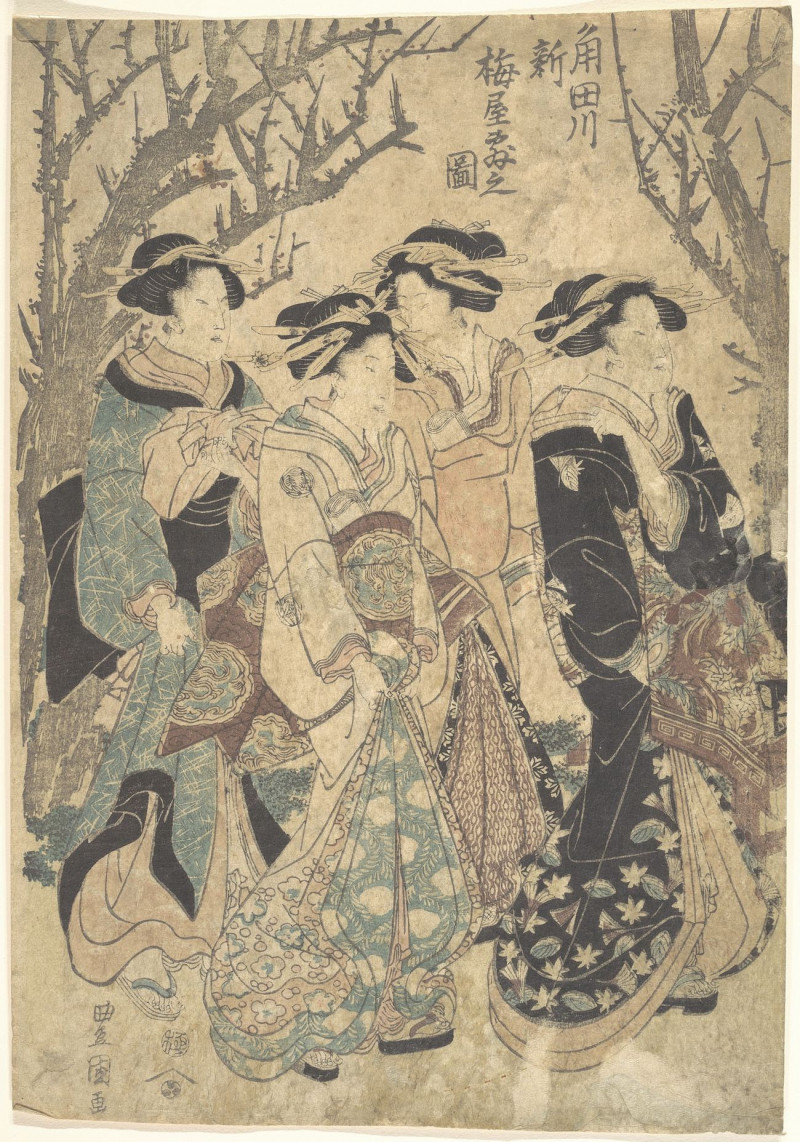
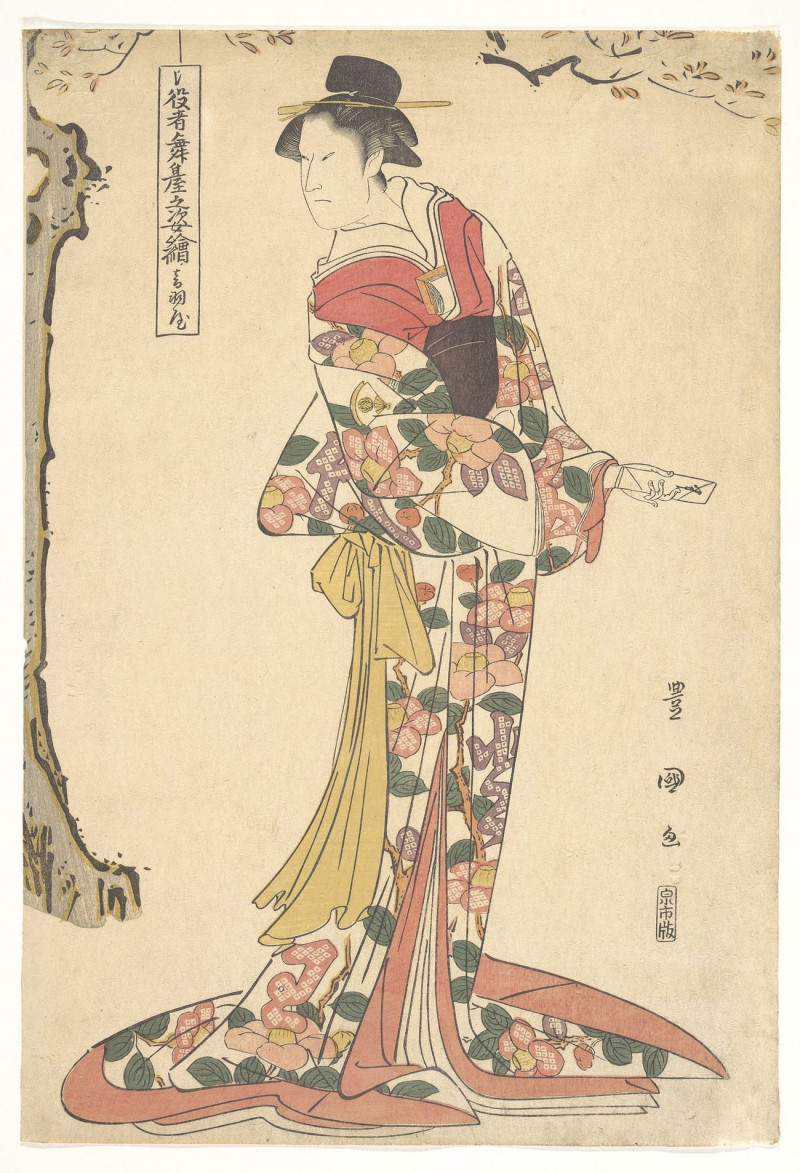


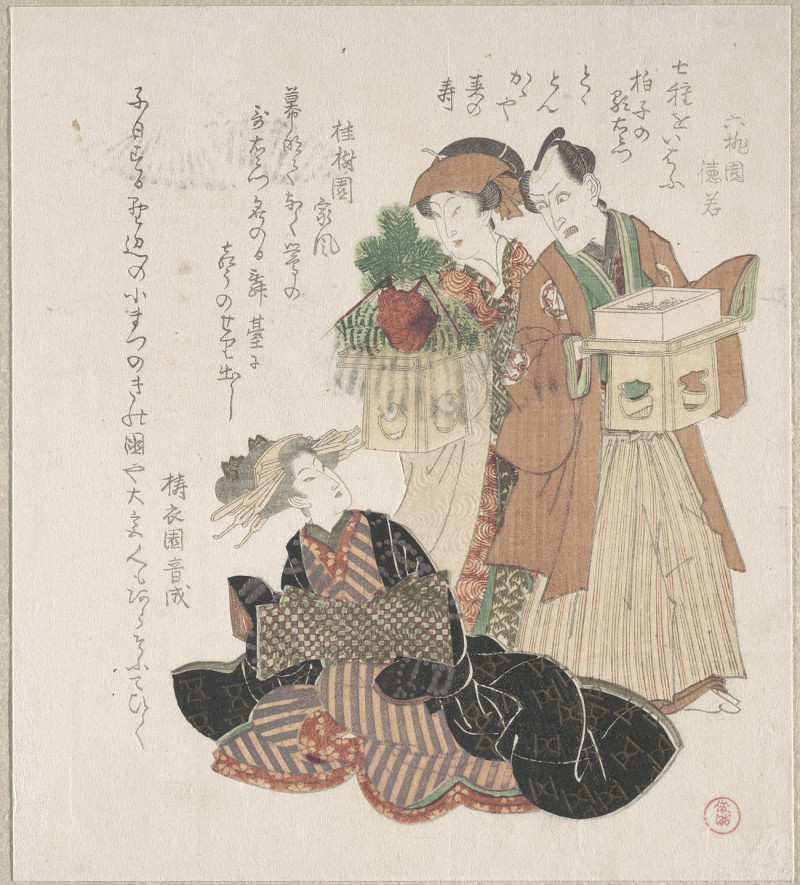
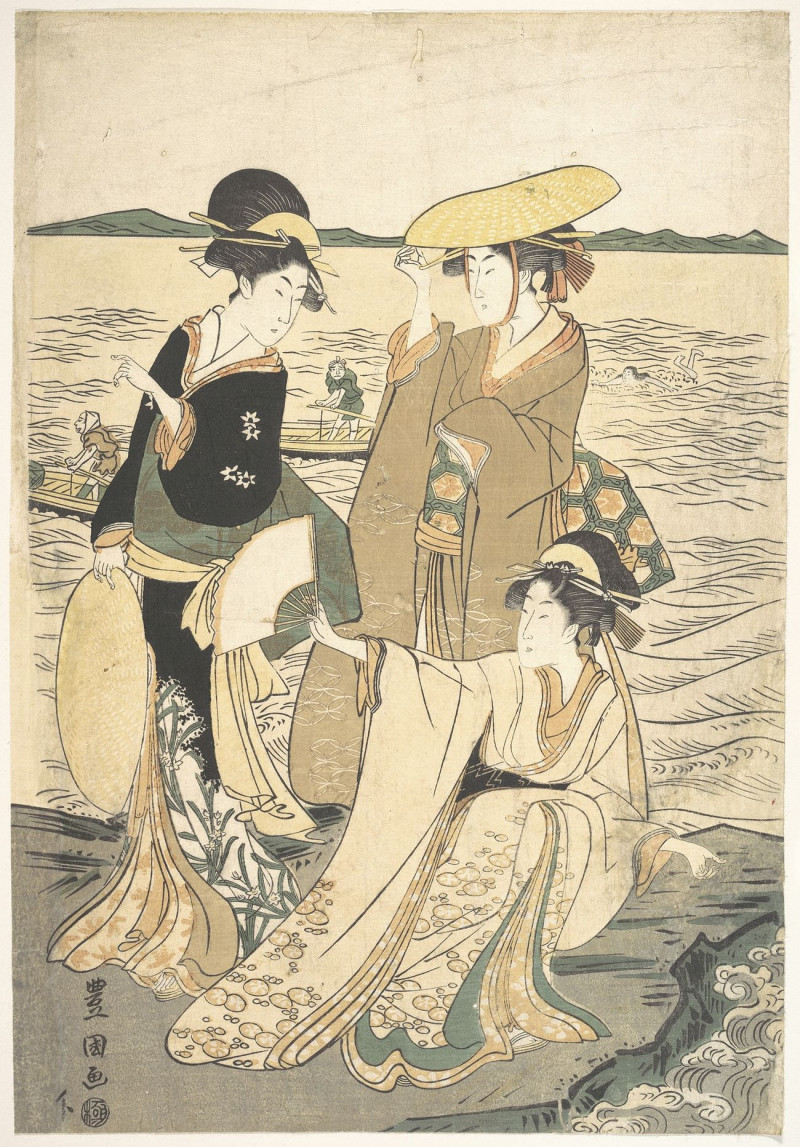
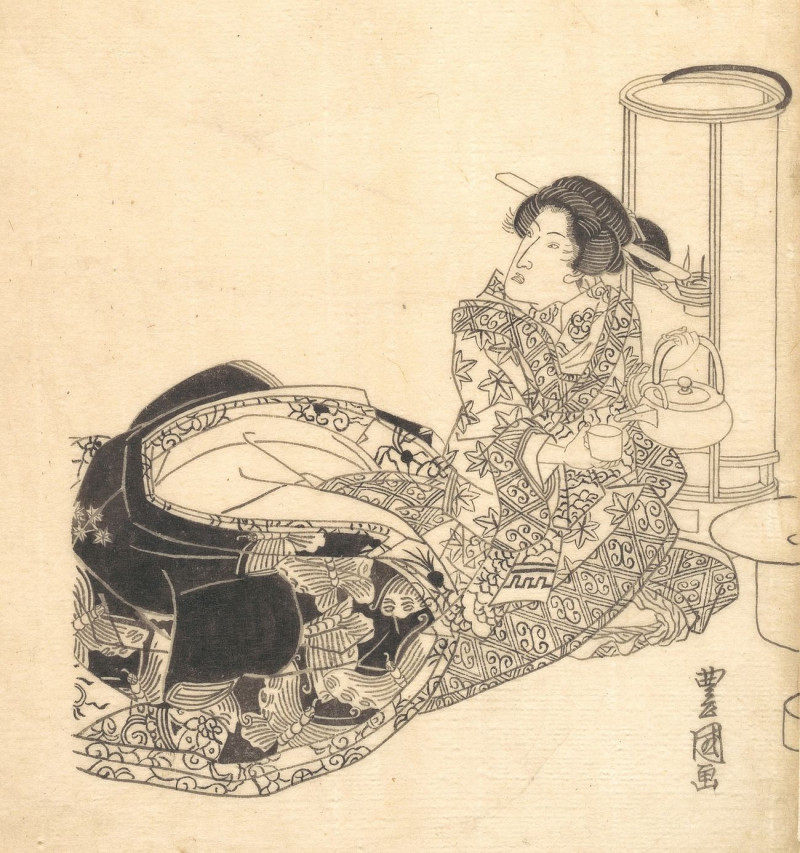

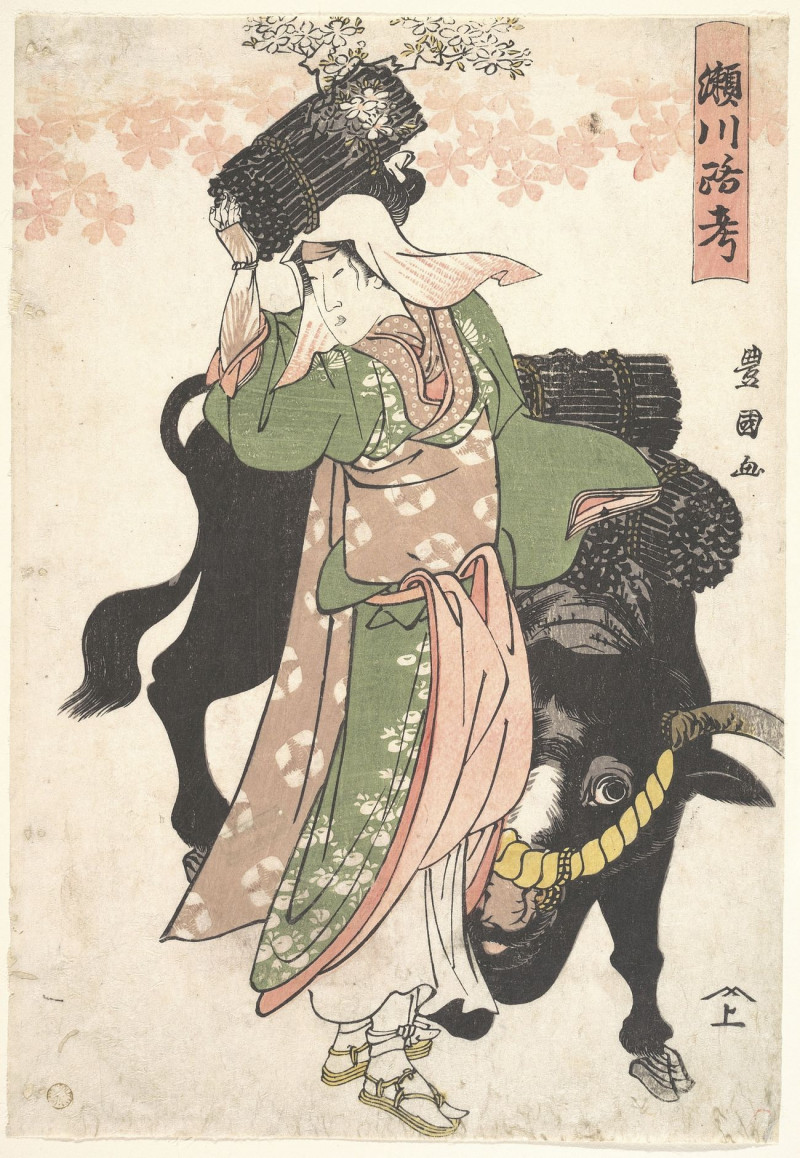
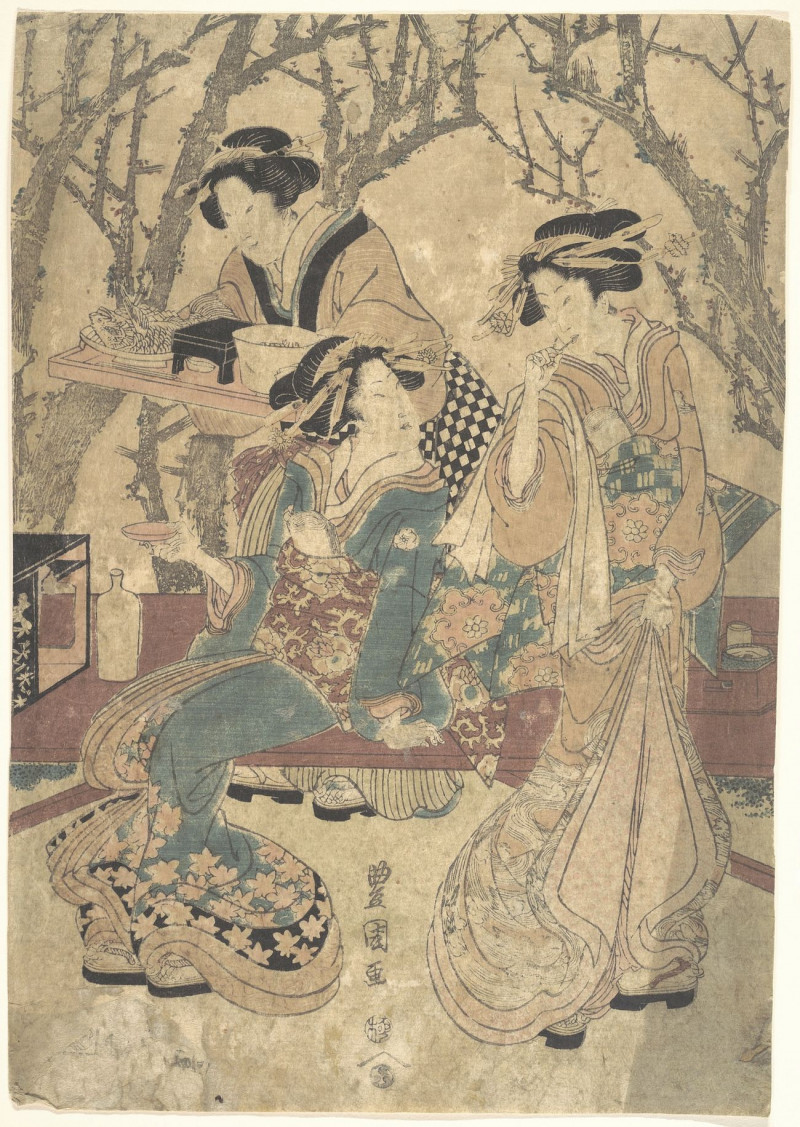
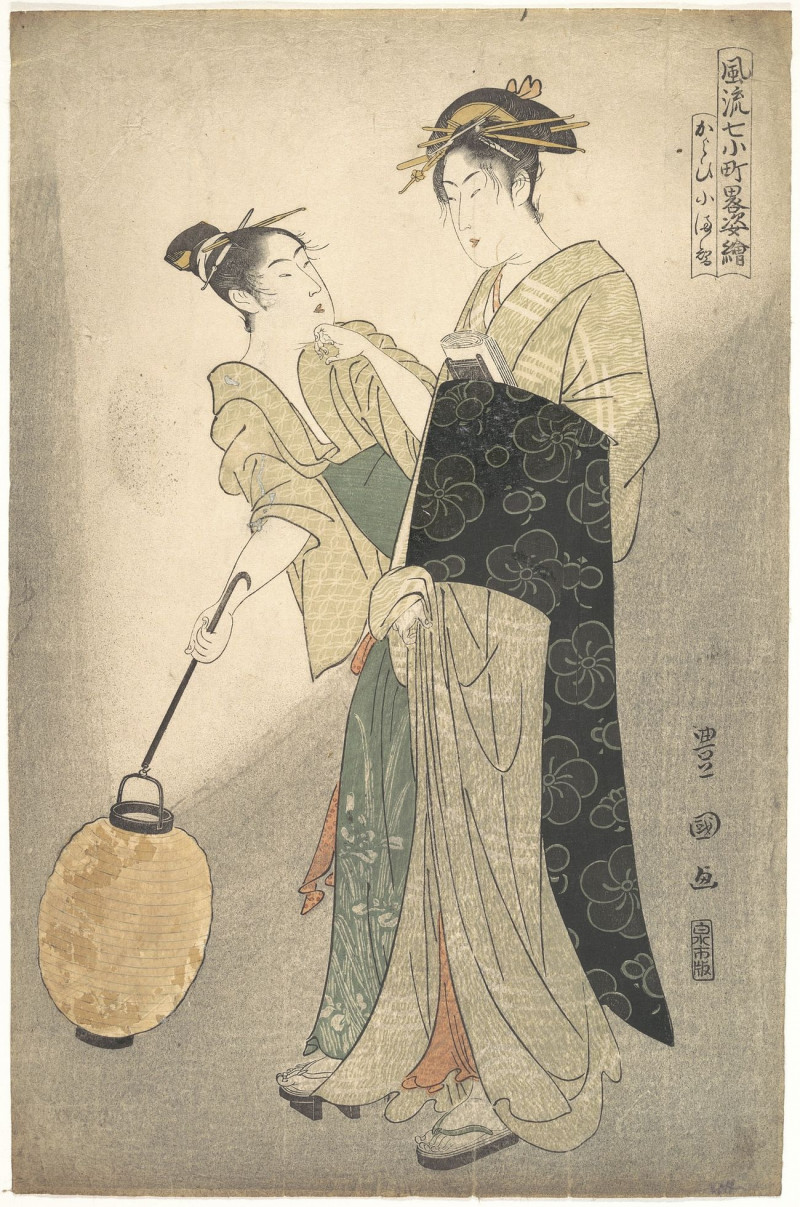

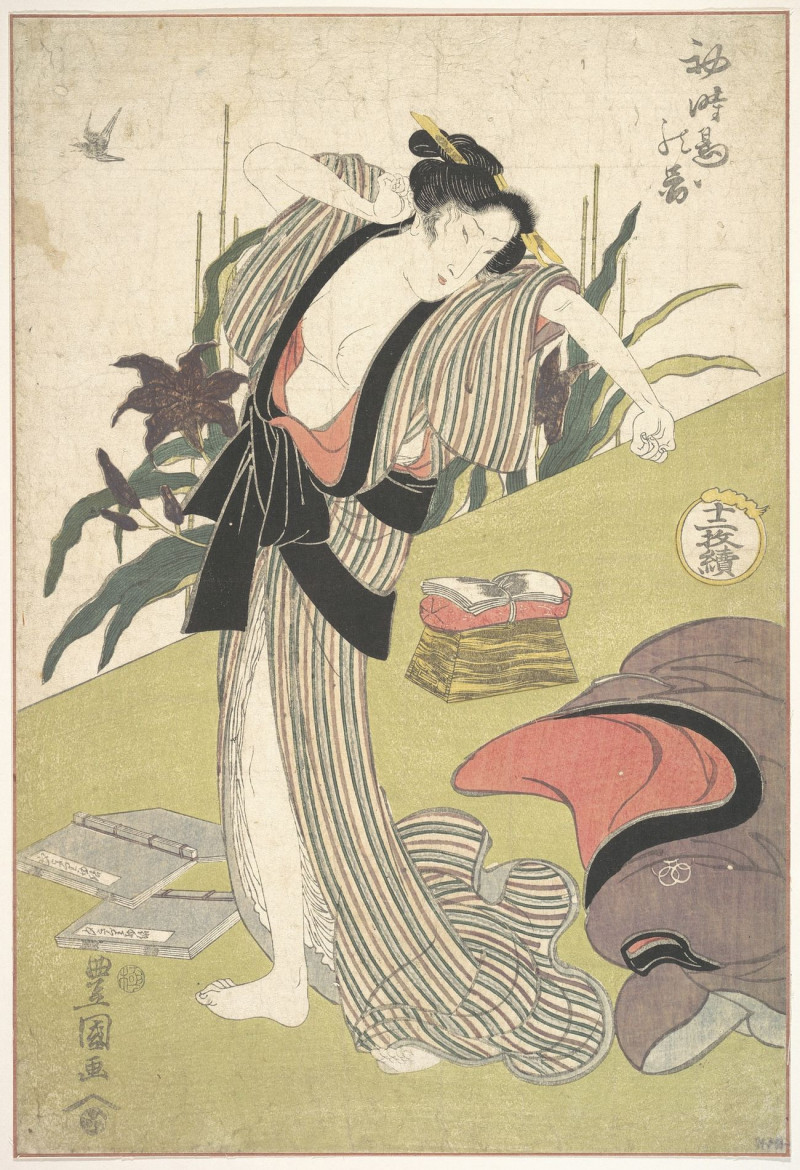

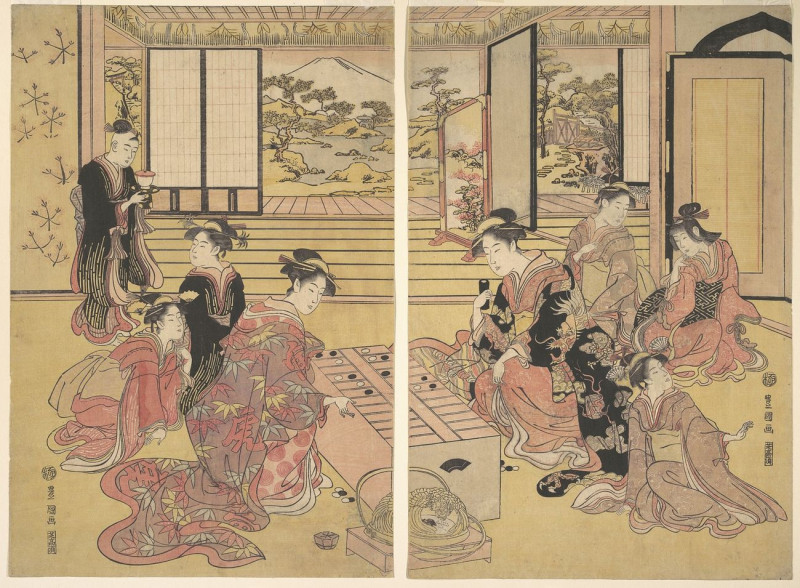

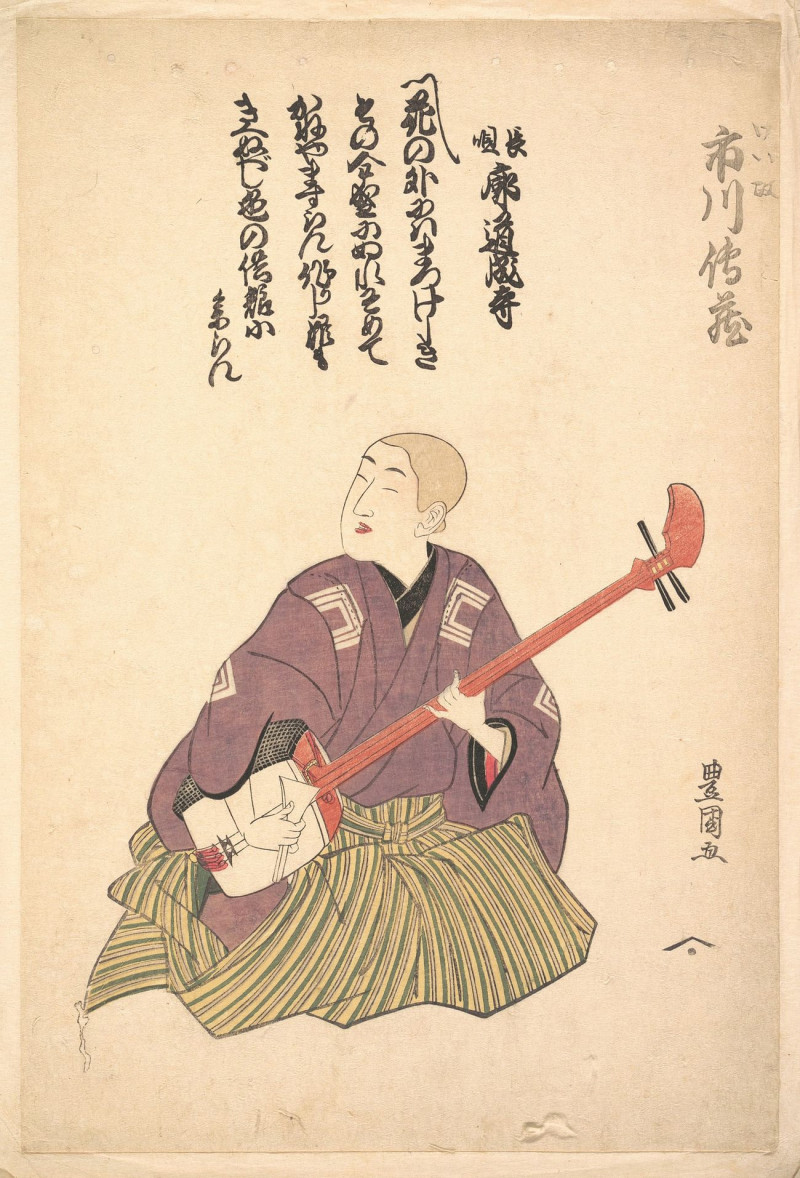

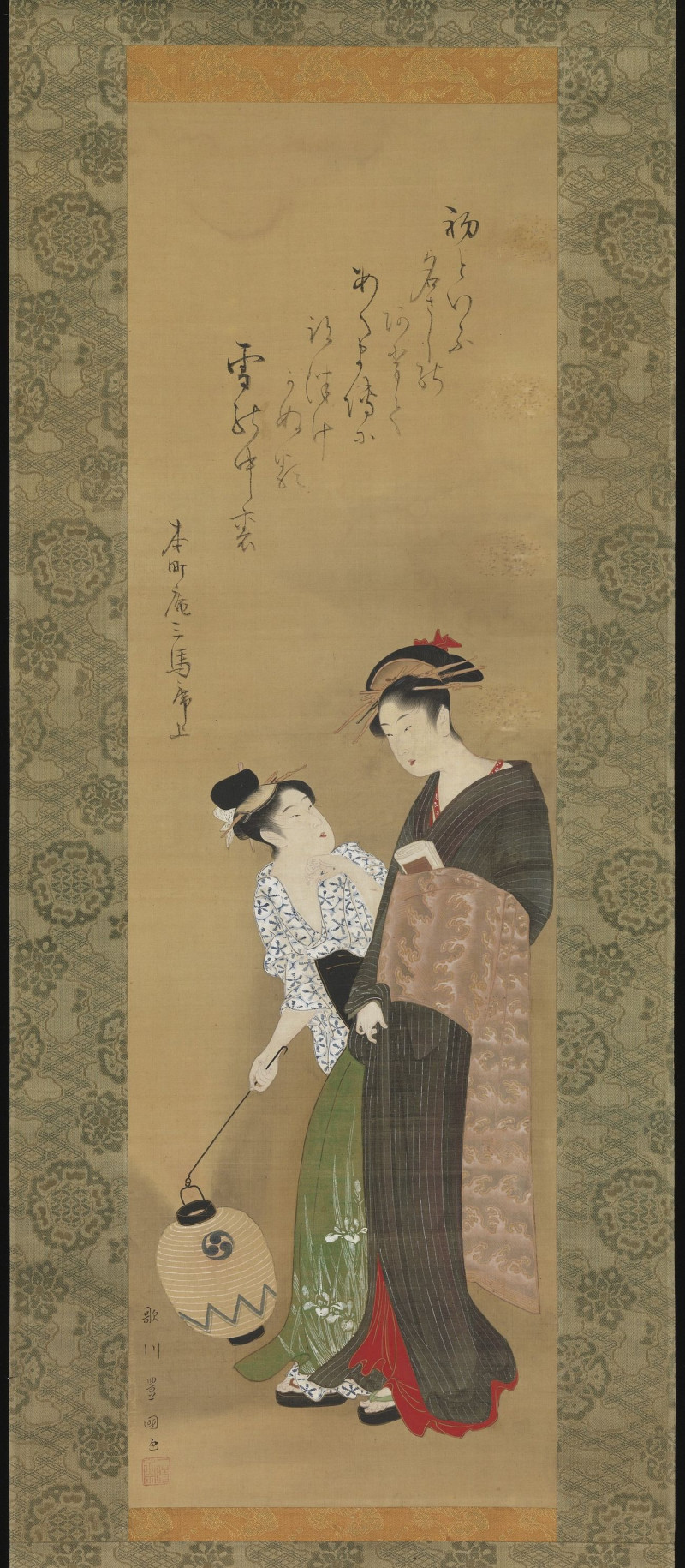
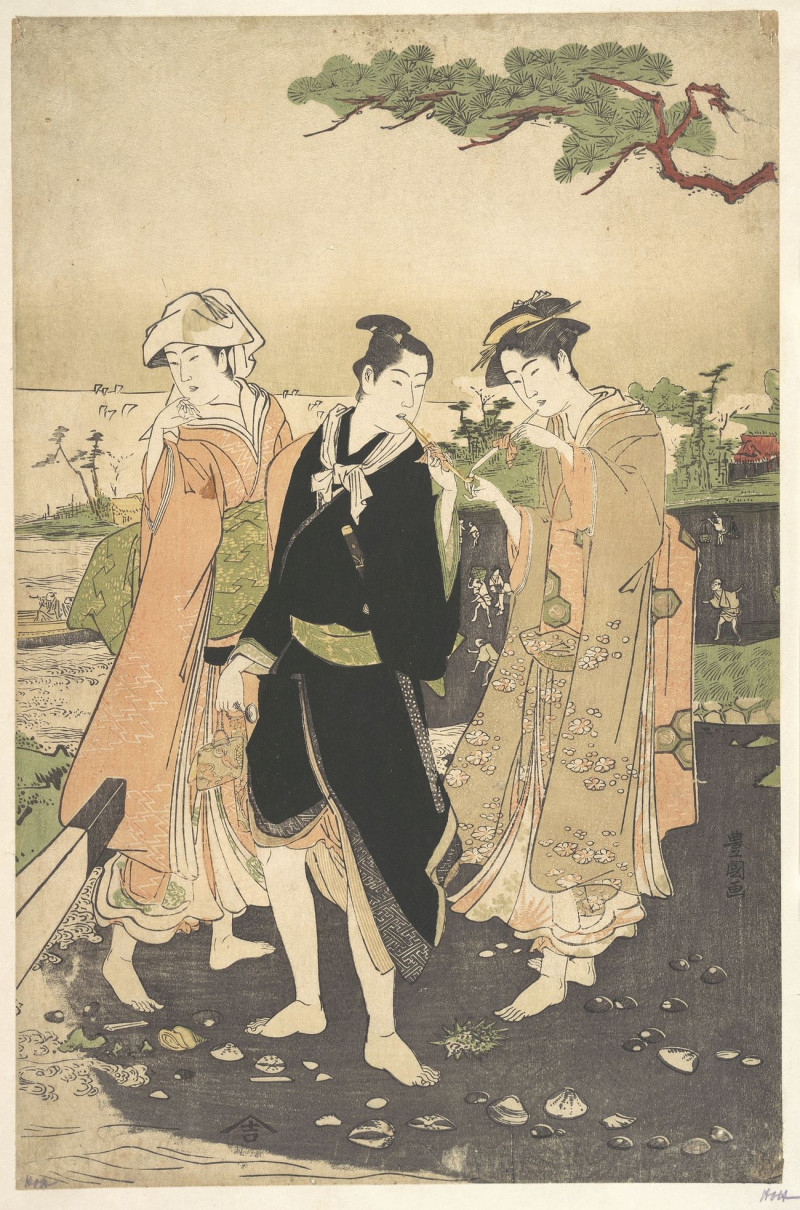

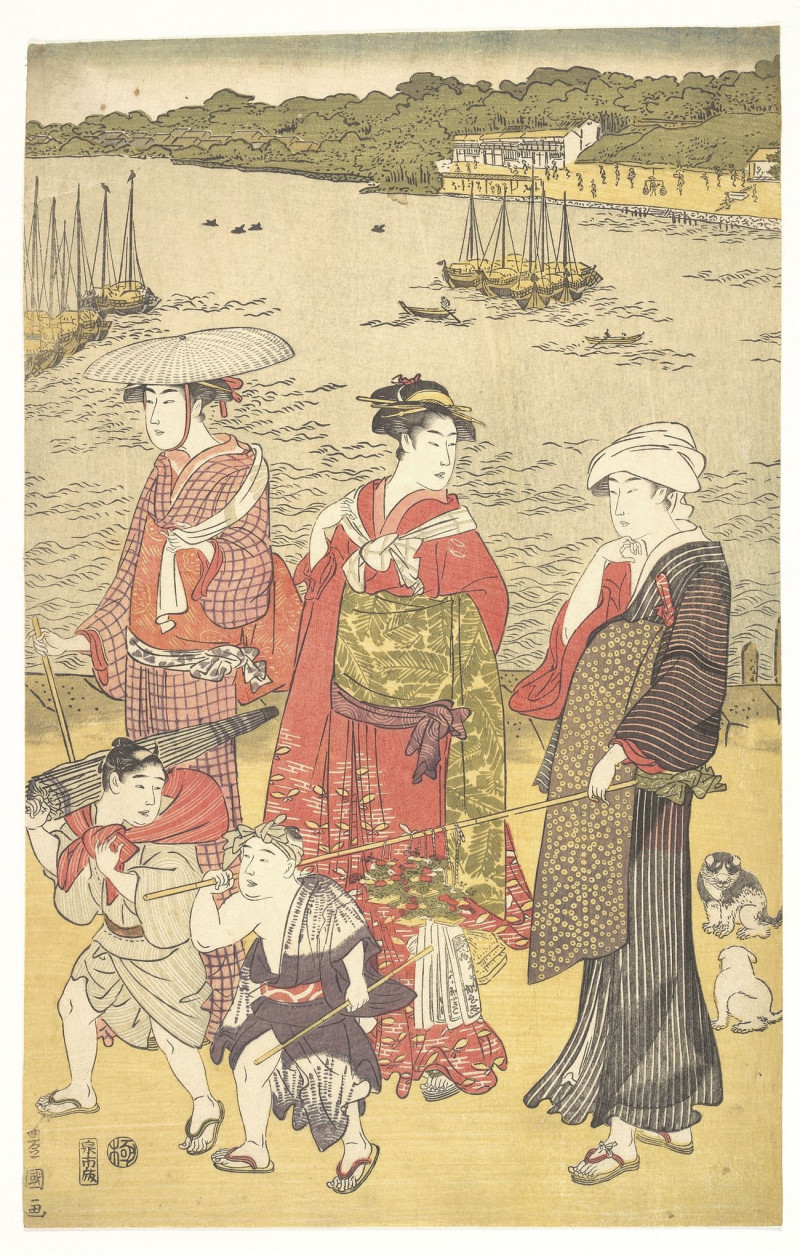
![Amusements Of Kabuki Actors Of The “Third Floor” [Dressing Room] reproduction of painting by Utagawa Toyokuni. ALL GICLEE PRINTS](https://reprodukcijos.lt/32918-large_default/reproduction-of-amusements-of-kabuki-actors-of-the-third-floor-dressing-room.jpg)
